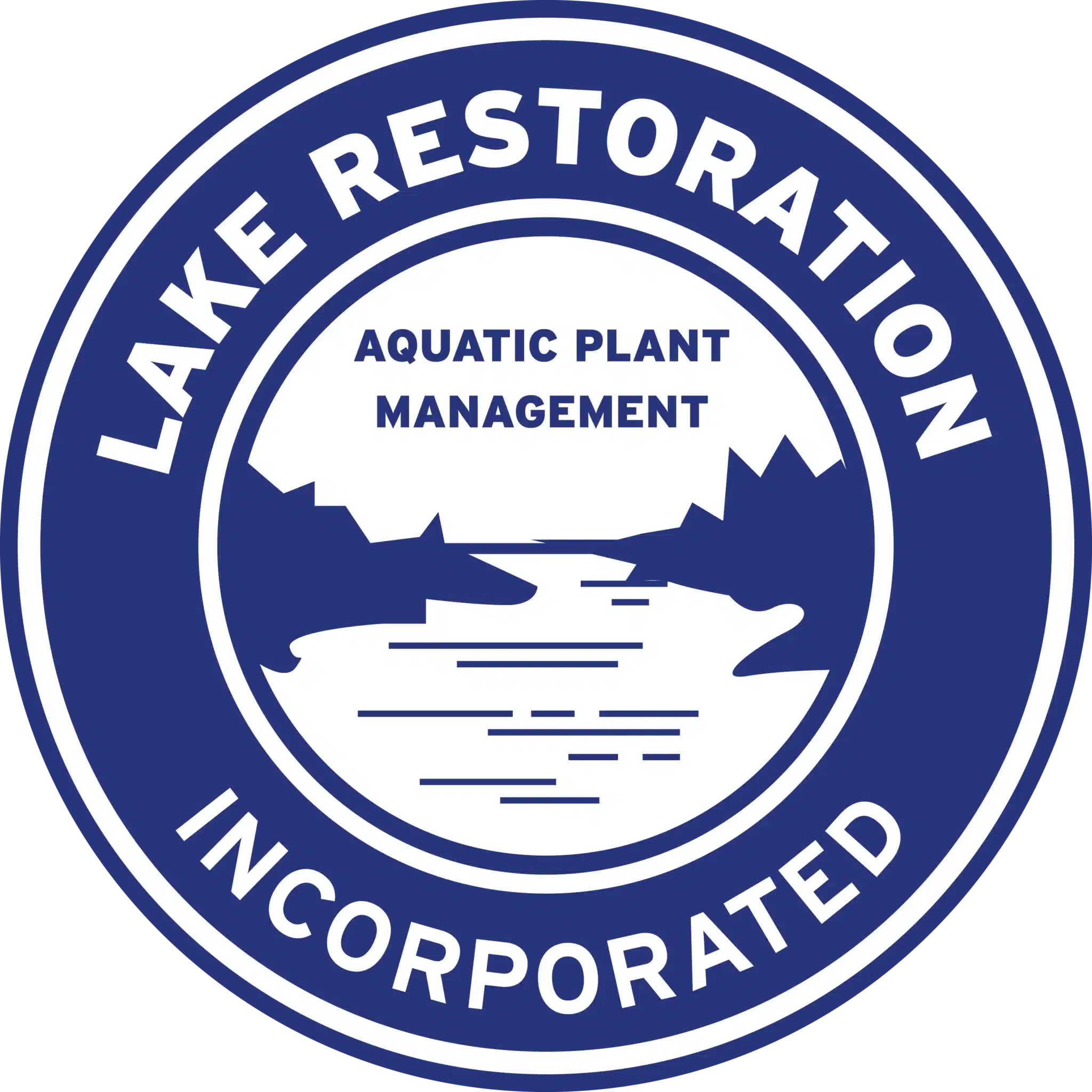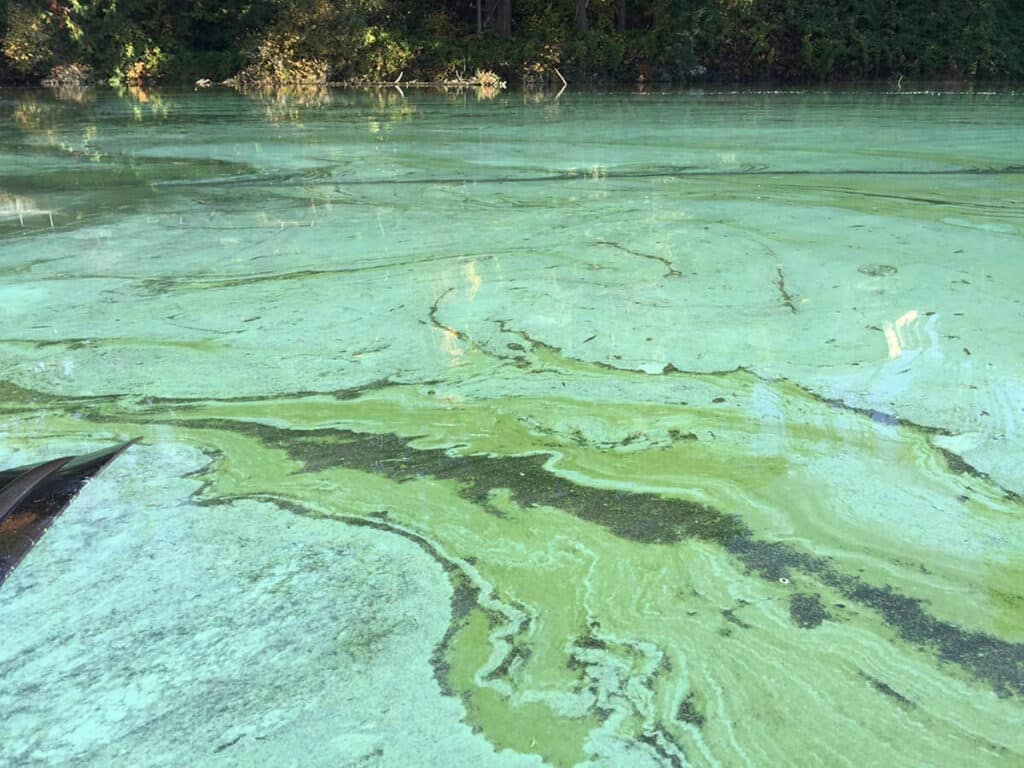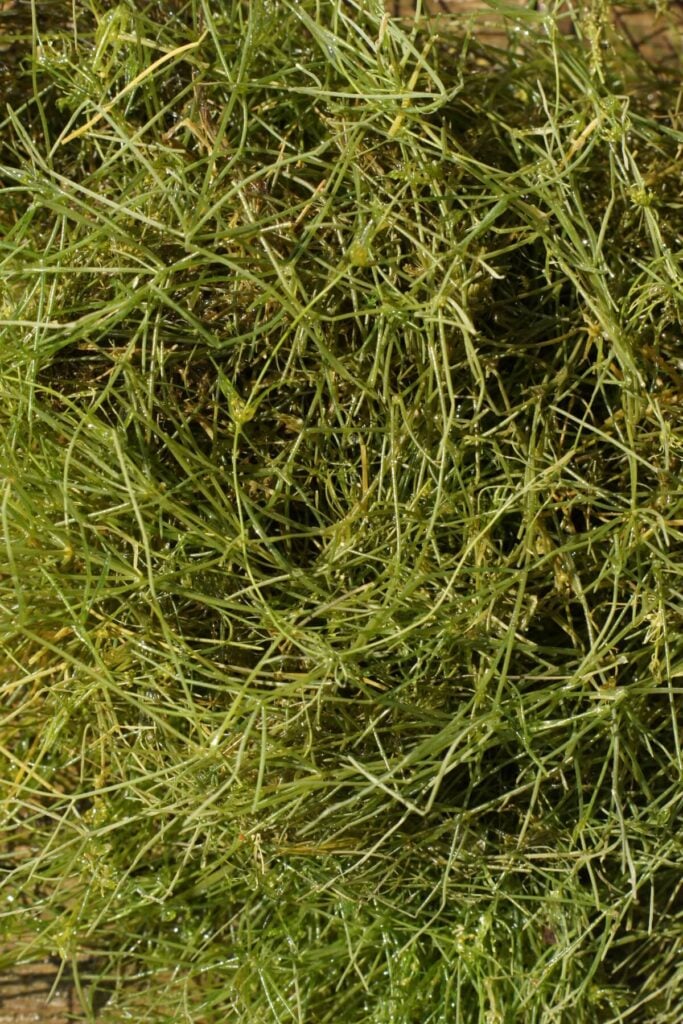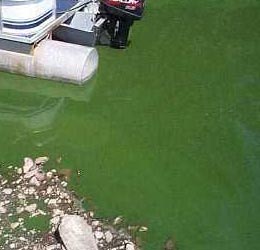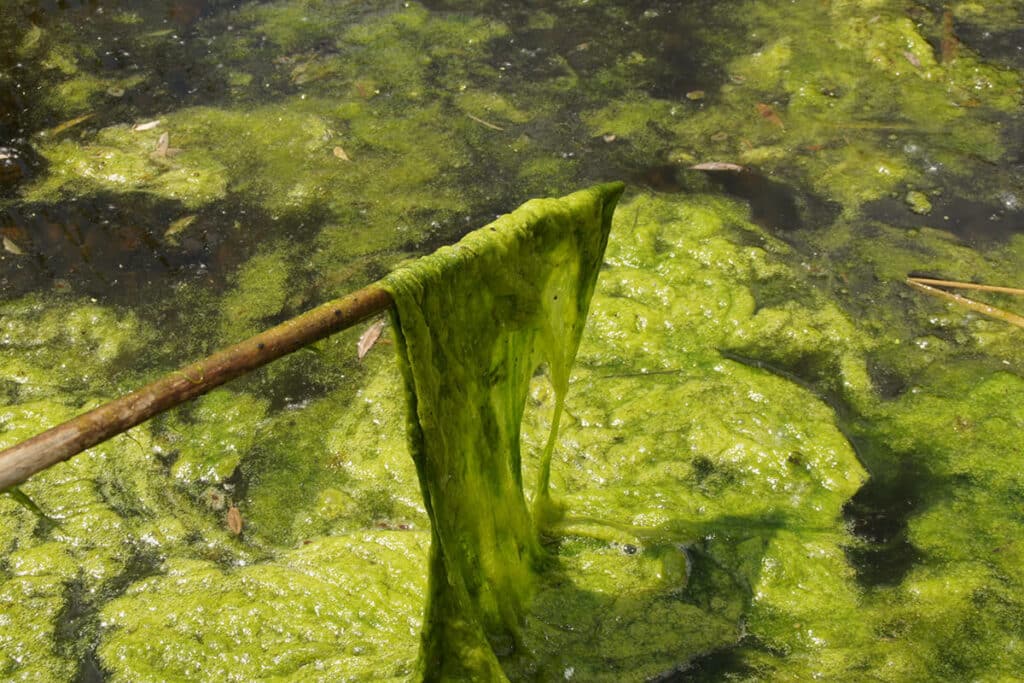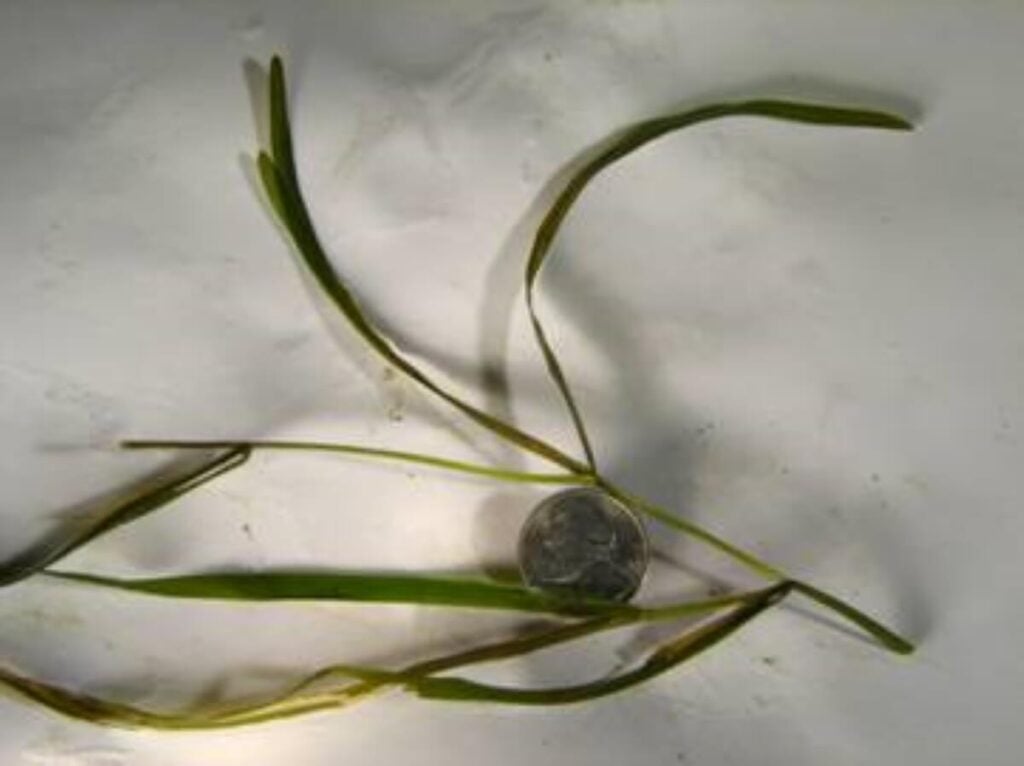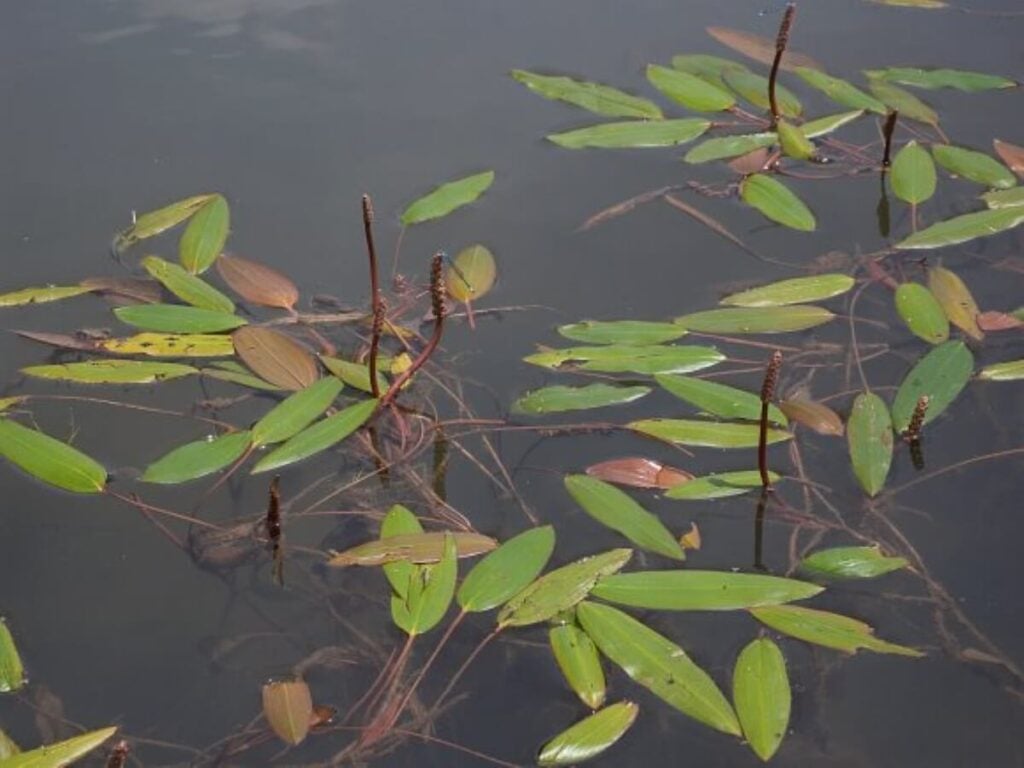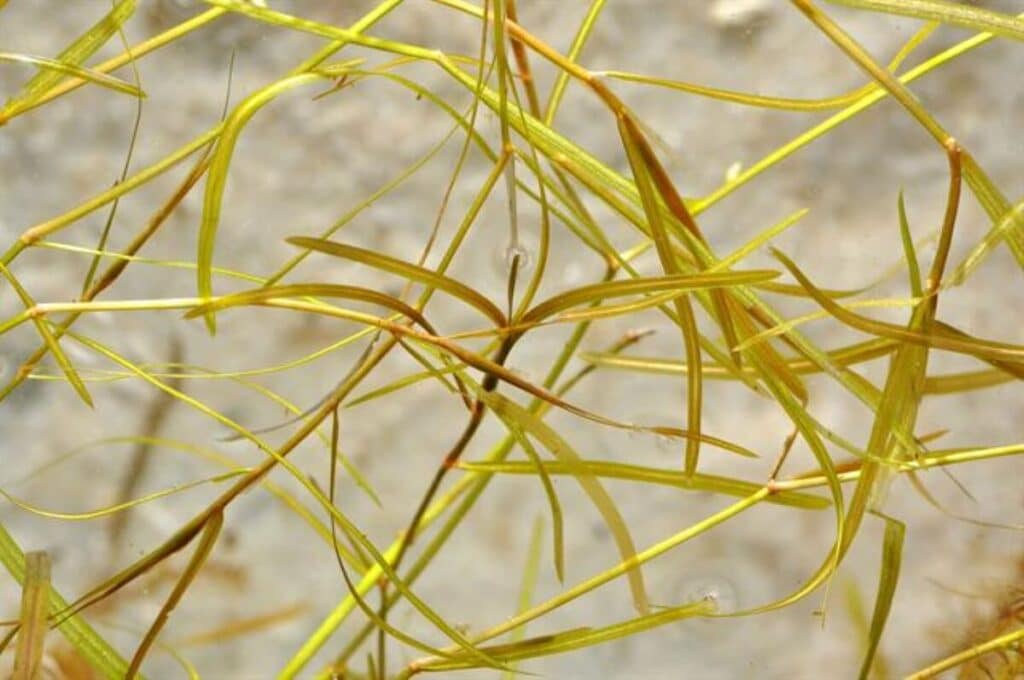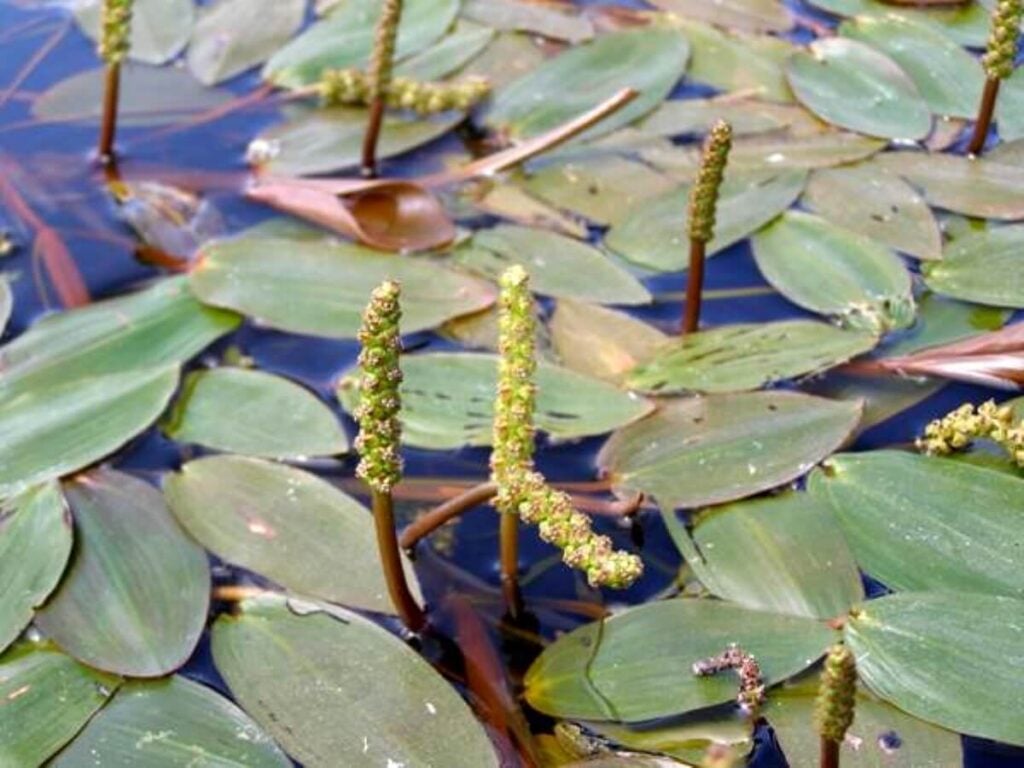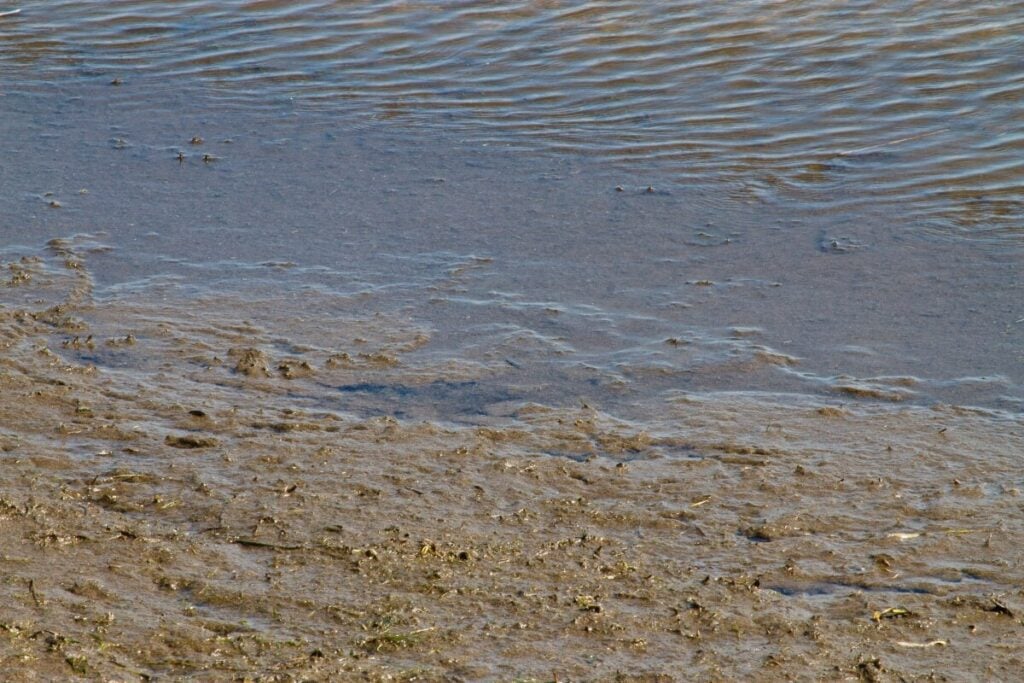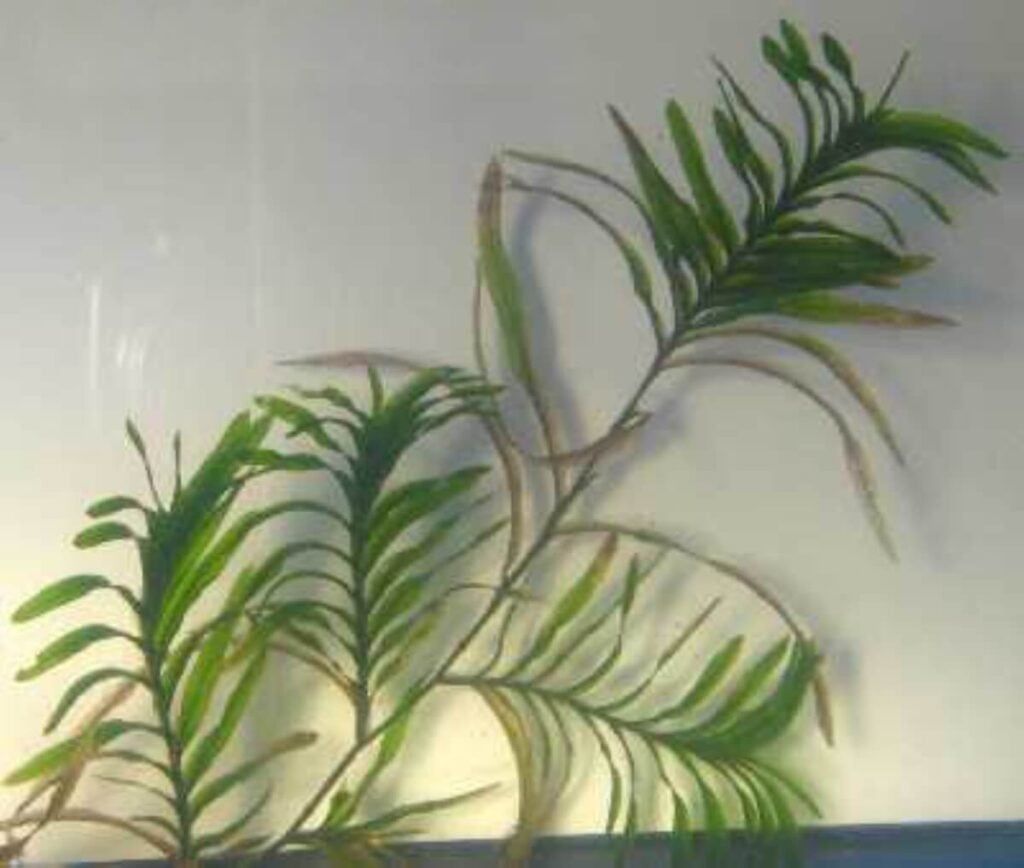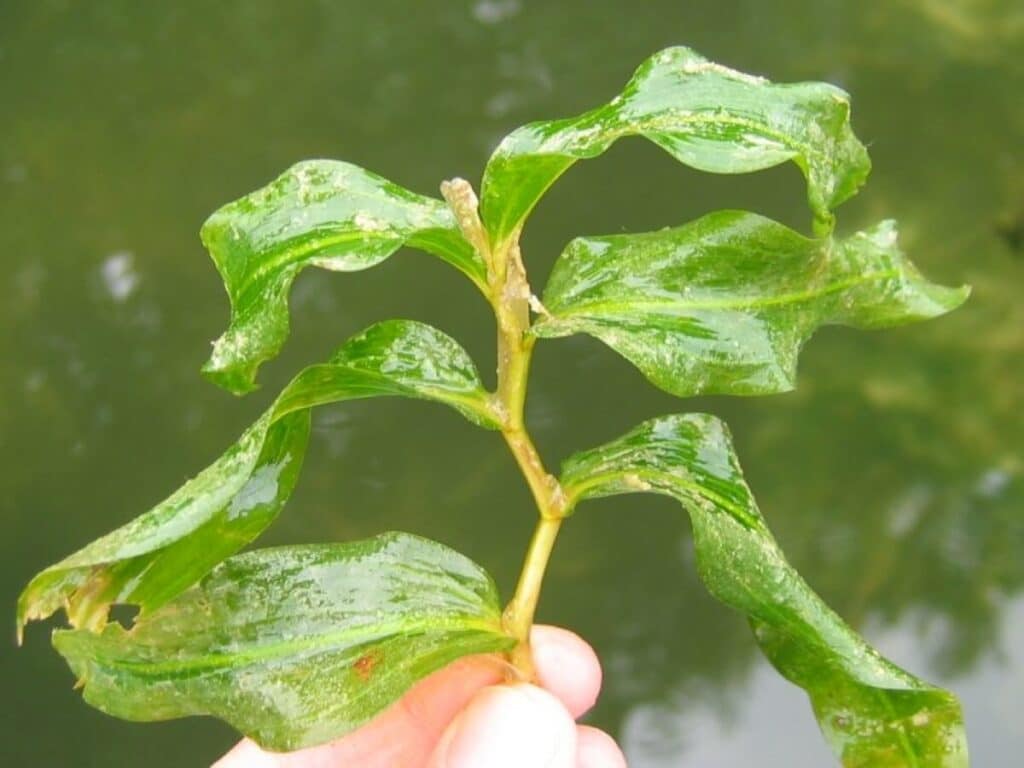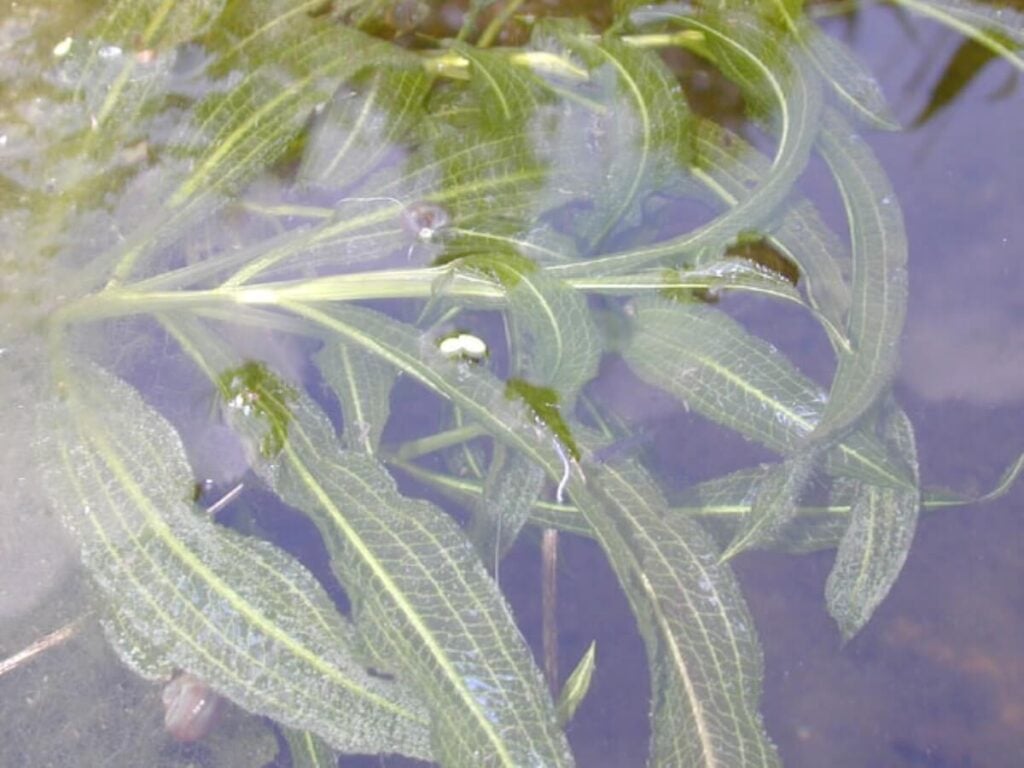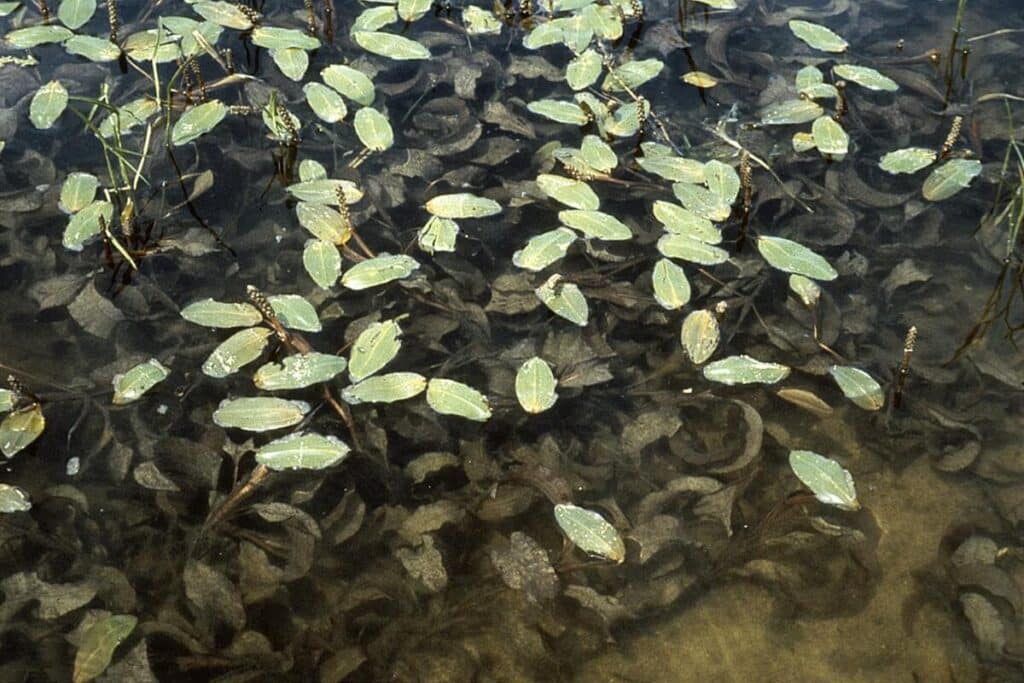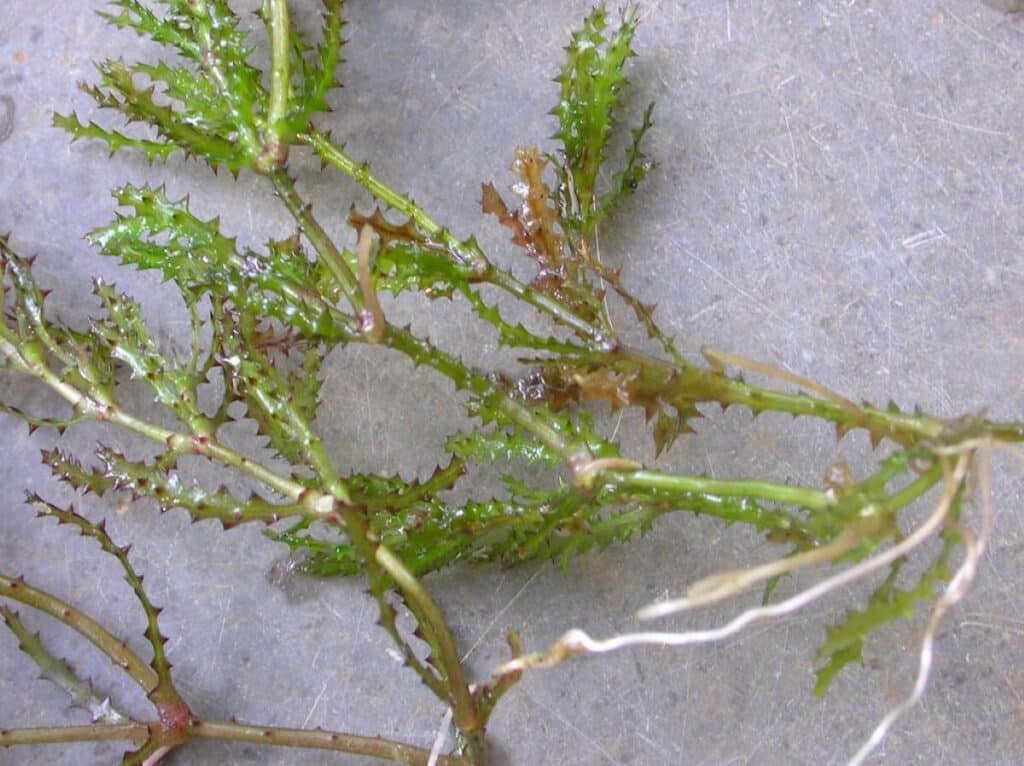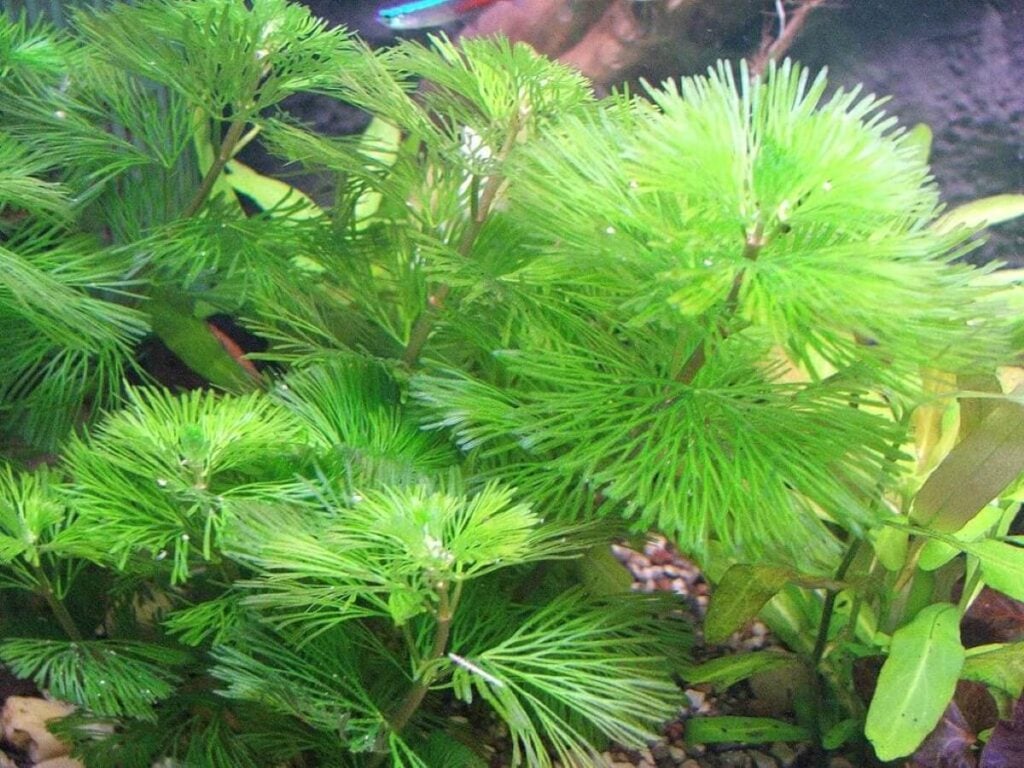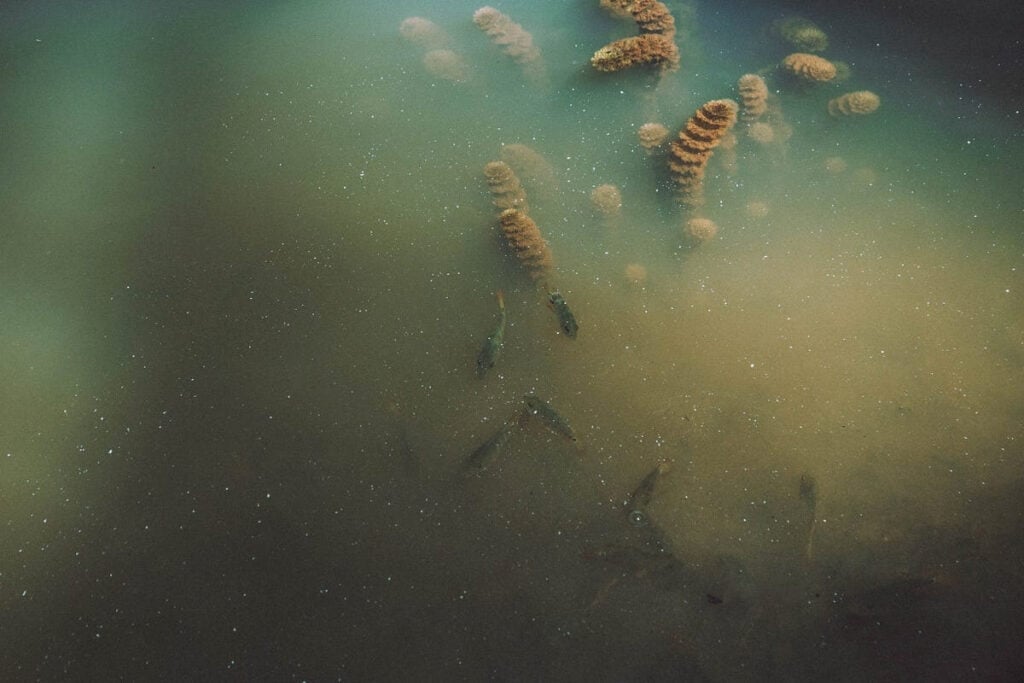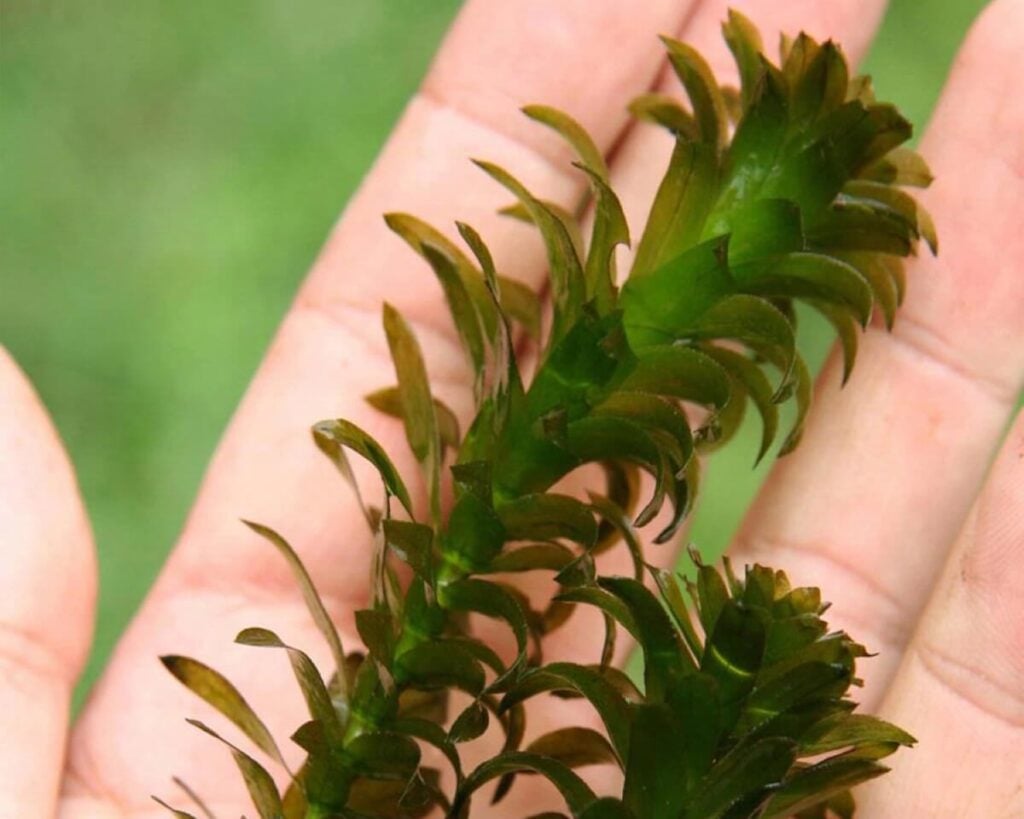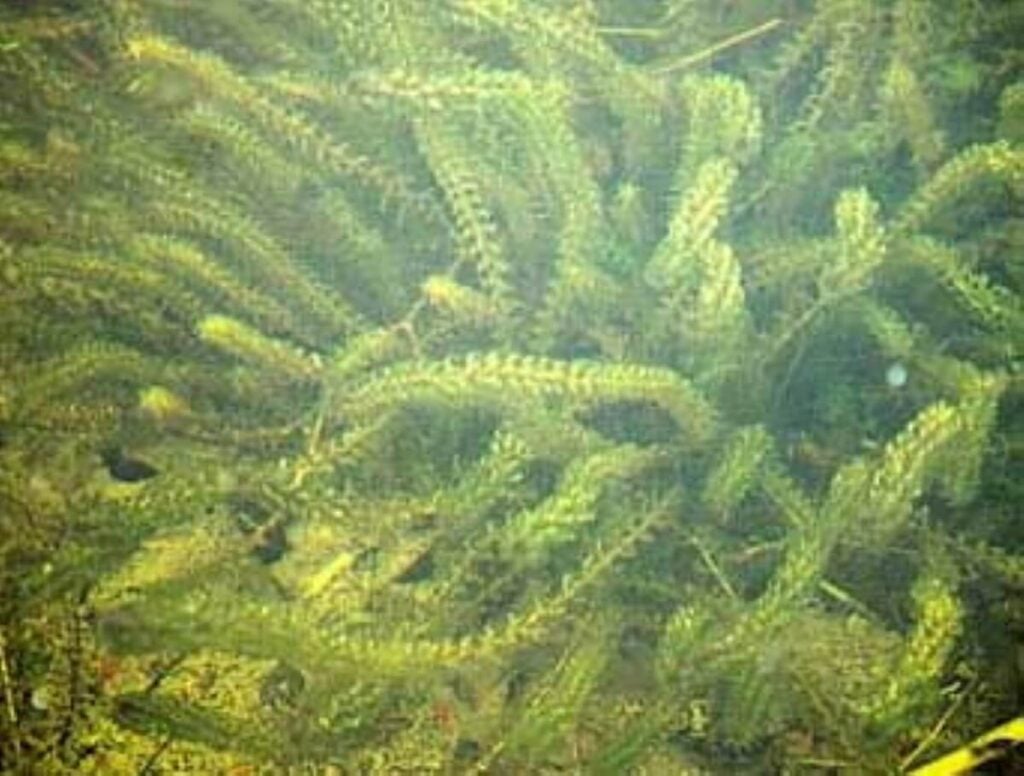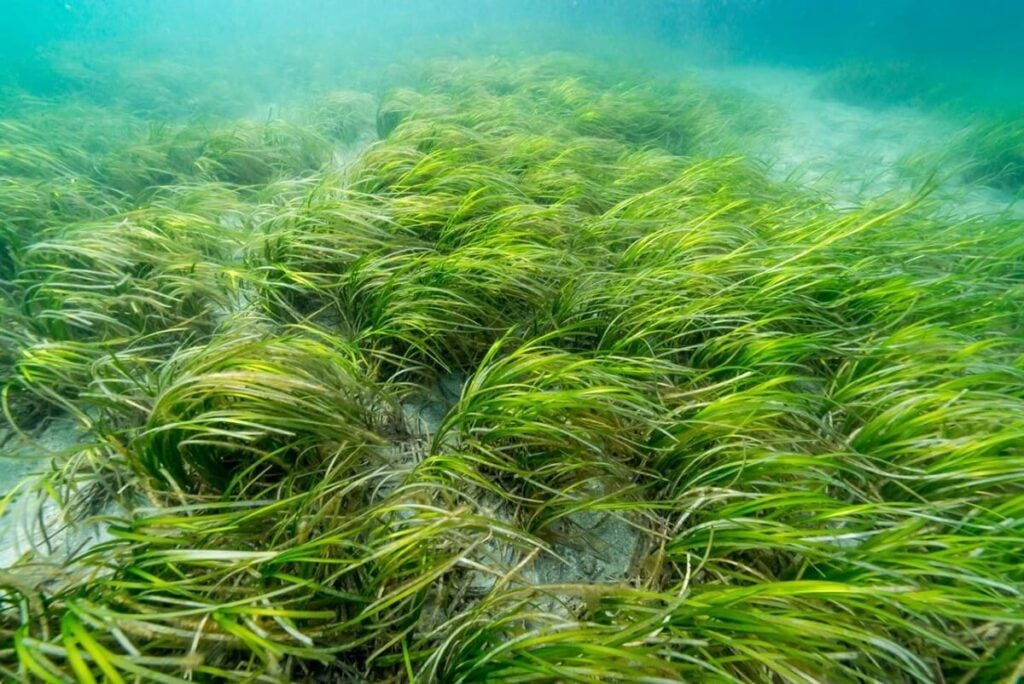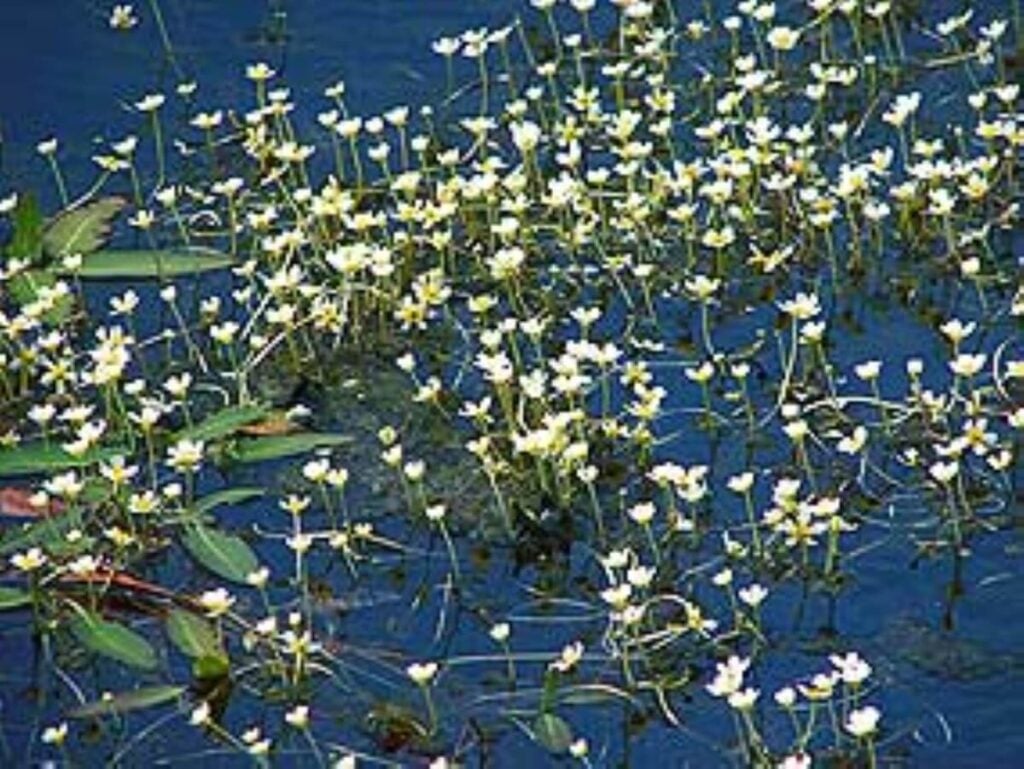Weed Control
How to Control Aquatic Weed Types and Aquatic Plants
Ponds grow a variety of pond weed types, many of which look similar. The aquatic weed identification information below lists the most common weed types -- including emergent, submerged, and floating weeds -- to help you explore and identify aquatic weeds in your pond or lake.
For those looking for weed control solutions, Lake Restoration has developed all-in-one pond and lake weed control kits that make it unnecessary to identify the type of weeds in your pond. Feel free to use the information below to facilitate your pond weed identification goals, or contact us today to talk to our customer support team about the right control product for your pond or lake.
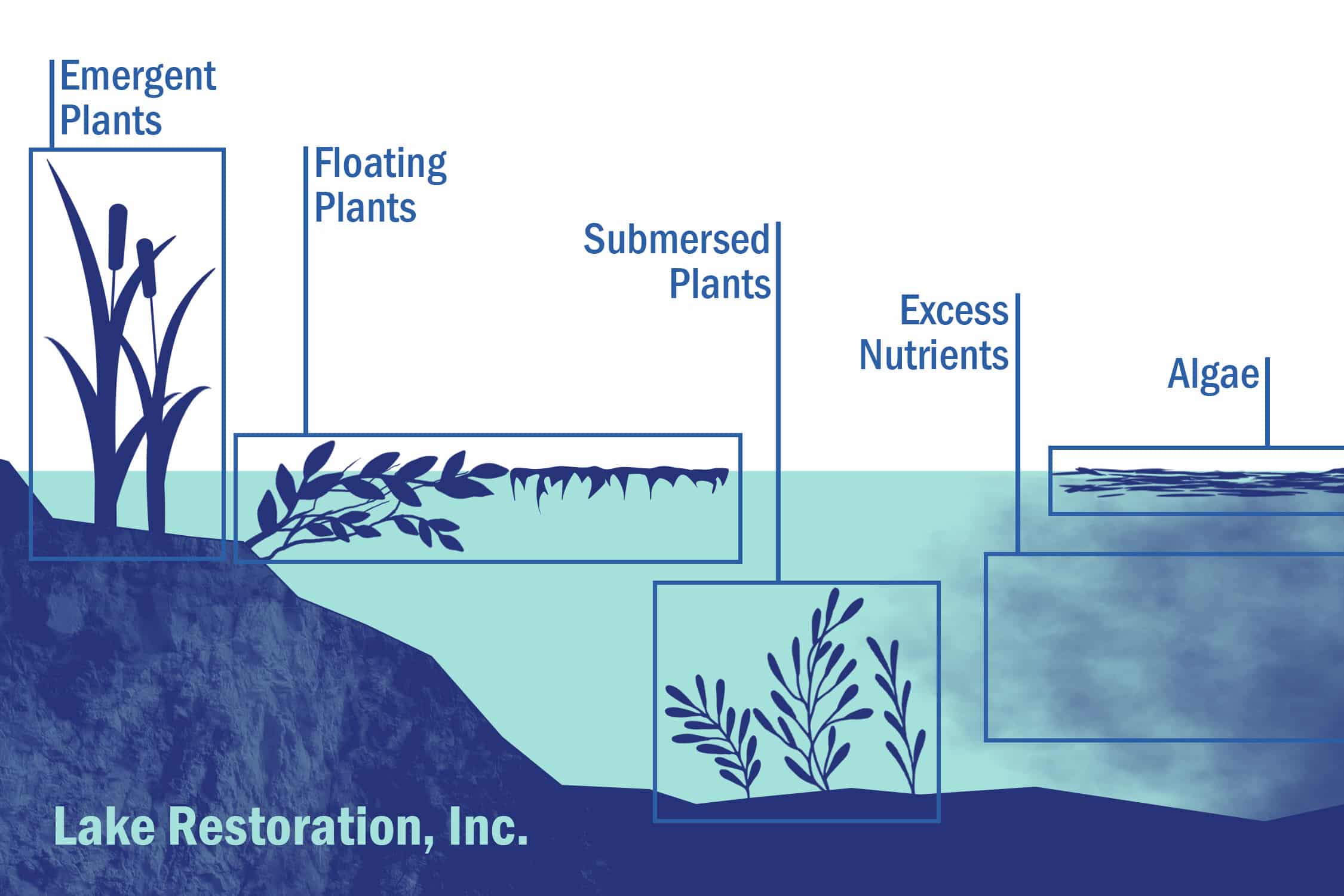
Blue Green Algae
Blue green algae can be green, brown, or reddish purple looking in the water.
Starry Stonewort
Starry Stonewort resembles a submerged plant and can be identified by the little white stars amongst the gelatin green branches.
Planktonic Algae
Planktonic algae look like pea soup or spilled paint.
Filamentous Algae
Filamentous algae have an appearance like that of stringy hairs or cotton.
Flat Stem Pondweed
Flat stem pondweed has both a flat stem and flat leaves with no floating leaves.
American Pondweed
American Pondweed has elliptical shaped floating leaves that are green and often have brown spots.
Small Pondweed
Small pondweed produces only submersed leaves that are light green and nearly three inches long and less than a quarter inch wide.
Floating Leaf Pondweed
Floating leaf pondweed has long, narrow, stiff submersed leaves and two to four inch long floating leaves on long stalks.
Muck
Muck is made of decomposing organic material, can be brown to black, and have an unpleasant odor.
Robbin’s Pondweed
Robbin’s pondweed has thick and coarse submersed leaves with a prominent yellow vein in the middle.
White Stem Pondweed
White stem pondweed has a zig zag stem that is sparingly branched. Alternately arranged wavy green leaves have a yellow midvein and no floating leaves.
Illinois Pondweed
Illinois pondweed has lance shaped submerged leaves eight inches long that come to a point at the end.
Large Leaf Pondweed
Large leaf pondweed has long, wide floating leaves that curl away from the stem.
Marine Naiad
Marine naiad is a submerged plant with small brittle leaves that are stiff and toothed.
Fanwort
Fanwort is a delicate, feathery looking submerged plant. It has a few elongated floating leaves. The slender stems have a thin jelly coating.
Excess Nutrients
Excess nutrients can make the water look cloudy, murky, or muddy.
Egeria
Egeria is a submerged plant with three to six leaves per whorl and no midrib teeth.
Elodea
Elodea is a submerged plant that has three leaves per whorl and no midrib teeth.
Eelgrass
Eelgrass has long ribbon like leaves with very distinctive veins like that of celery.
Water Buttercup
Water buttercup has showy white or yellow flowers during the summer months and has finely divided leaves.
